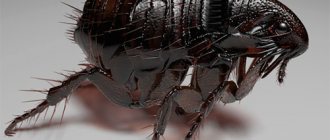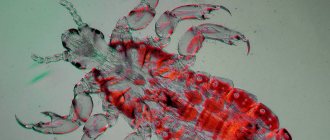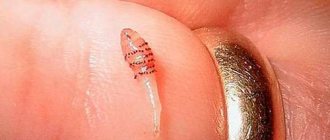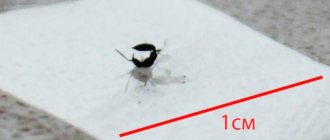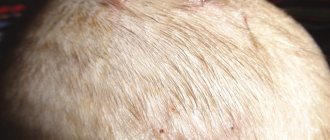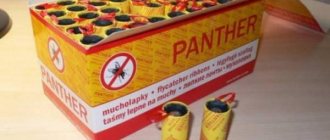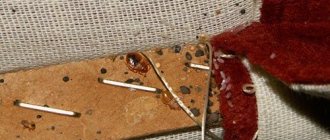3 comments
Home Rodents Where do rats come from under the hood of a car, how to get rid of them?
Rats under the hood of a car
Pests can appear almost anywhere, even in the most unexpected places. So, rats under the hood of a car will feel quite comfortable, especially in cold winter. But how do they get there? And how to drive out and destroy these rodents?
- How do rats appear?
- How can you tell if there are rats under the hood?
- Are rats dangerous in a car?
- How to fight?
- Prevention measures
Reasons for rodents appearing in a car
If the owner of the car begins to smell an unpleasant odor in the car or notices a hole in the seat upholstery or scratches on the plastic, then a rodent is in charge of the vehicle. If you do not take measures to combat rodents, such a neighborhood can bring a lot of trouble:
- the risk of contracting infections and diseases carried by mice;
- damage to the interior trim, seats, rubber gaskets, plastic, floor covering;
- unpleasant odor of feces and other waste products of rodents;
- damage to electrical wires, hoses and other important car parts, leading to car breakdown.
Mice eat everything. There are known cases where small rodents have bitten the ignition wires, alarm wiring and other electronic devices in the car. Failure of any system can occur while driving, which is dangerous to the health and life of people.
If there was a mouse in the car, it preferred this particular place of residence for certain reasons. In many cases, the owner of the car is to blame for the fact that his vehicle is infested with pests. Where mice live should be dry, warm and able to find food. The main reasons for the appearance of mice in cars are:
- there were food remains in the car or in the trunk that attracted the attention of rodents;
- the car is often located near trash cans or basements, from where mice can easily get into the warm engine compartment to warm up in cold weather;
- pests can get into the car along with transported garbage or construction waste;
- The car is kept in a garage where mice live.
Getting into the car is not difficult for small rodents. The most common entry point for pests is through the engine compartment under the car. Mice under the hood are warm and protected from wind and rain. By chewing through the interior trim, they get inside and can hide under the seats.
Interesting!
Car owners have discovered mouse nests in the most unpredictable places of the car: in the trunk, under the floor covering, in the glove compartment, in seat and door pockets. They even found mouse nests in the roofs of cars under the ceiling trim.
Use light to deter invasion
Rodents love to build nests and hide food in nearby places so they can eat it later. Sometimes rodents will store food in inconvenient places, such as inside car filters. Turning on the garage lights (and opening the car hood) can discourage nesting, as some rodents cannot sleep with the lights on and may choose to nest in darker areas instead. For those who do not park in a garage, it is sometimes recommended to leave the hood of the car open during the day to prevent intruders from finding a dark, enclosed nesting area.
Most common habitats
You can find mice anywhere, since cramped spaces are not a hindrance for them. Car owners can detect them:
- In the glove compartment, trunk;
- In pockets and under trim;
- Under rugs;
- Next to the engine.
It's not uncommon for them to be located under the hood, since the engine generates heat and there are a lot of wires there. Surprisingly, they can even penetrate the roof of a vehicle, even if they only need foam or cardboard.
Prevention measures
To avoid the problem of rats in your car, follow some simple rules:
- Don't leave food in your car; it will attract rodents. Take all leftover food out of the cabin.
- Try not to park your car near garbage cans, as garbage dumps are home to many rodents that can easily get into nearby cars.
- You should not park your car in places where there are storage facilities or warehouses.
- If you are forced to leave your personal vehicle in potential habitats of rodents or suspect that there are rats in the parking area (they can be detected when moving or by following tracks on the ground or snow), then for prevention, treat the engine compartment with protective sprays against rodents, set traps or use poisons several times a week.
Exterminate rats under the hood of your car in time to avoid unpleasant and serious consequences!
How to get rid of mice in a car
To get rid of mice in a car, you can use most of the methods to eliminate rodents in an apartment.
We suggest you read: Earth fleas in the house: how to get rid of them using folk or chemical remedies, where they come from and what they look like
It is only undesirable to use ordinary poison. Animals can die in hard-to-reach places, from where it will be very difficult to extract them. The corpses will begin to decompose, and an unpleasant odor will emanate from them for a long time.
Industrially made mousetraps can be placed inside the car. They come in two types:
- Killer mousetraps. The mousetrap is cocked, bait is placed near it, and the slammed spring destroys the rodent. If such mousetraps are placed inside a car, then before using the vehicle, you need to make sure that the springs are deflated, otherwise both the driver and passengers may suffer.
- Mouse traps. This is a cage in which the door slams shut after the mouse disturbs the bait.
Recently, electronic repellers have become popular. They can be powered by mains power or a car battery. The principle of their operation is the emission of ultrasound, which rodents cannot tolerate. Practice has shown that these devices are not always effective. Rodents quickly adapt to ultrasound; markets often sell fakes, the functionality of which cannot be verified before purchase.
A reliable and proven method in the fight against small rodents is the use of glue. This glue can be purchased at hardware stores. It must be applied to a piece of cardboard or board. The glue is squeezed out so that concentric circles 1-2 cm wide are formed from it, the distance between the circles is 3-5 cm. A bait with a strong odor is placed inside the central circle. A mouse following the smell gets stuck in the glue.
Mousetraps
This is a popular solution that is relatively cheap and practical to use. The mechanism of operation is very simple: there is a hole, a locking element that operates on a spring, and also a bait that is installed on a latch
Edible bait in the form of bread, meat, nuts attracts attention - the mouse runs up to the device and begins to eat. This leads to activation of the trigger mechanism, after which a blow occurs with a metal lever
After this, the pest dies; to reuse it, you need to dispose of the rodent and install the mousetrap again.
For rats, similar mechanisms are used as those found in rat traps. The presented product is distinguished by its larger size, as well as the presence of special teeth that dig into the skin of the rat
It is important to understand that products of this type do not work in some cases. This is due to the sharp minds of rats, which can outsmart the device
It is quite possible that the animal will simply ignore it or simply jump away from the product when the mechanism is triggered.
To get rid of rats, you can use special devices - rat traps, which can be mechanical or electric.
On the modern market you can find more humane products of a similar type. Many of them allow you to catch the victim, but not kill him. Once a mouse or rat goes to dine in such a device, it cannot get out. Having collected a sufficient number of pests, they can be released into an open field, saving lives and eliminating damage to your property.
Another type of trap are glue traps. They are used quite often as they have become more available in stores. Special cardboard stands are lubricated with a special adhesive composition, and the bait is placed in the center. Once the pest approaches the food, it sticks to the surface and remains until the home owners get rid of the animal.
Glue traps for mice are considered quite effective, but in the case of rats they may not help
All of the products under consideration are excellent for targeted, single extermination of rodents.
If it is important to get rid of an entire colony, it is better to use more practical solutions. The pest population is probably larger than the number of different devices in the house that you can regularly update and operate
Cruelty as a necessity
If all the described humane ways to eliminate rodents that have appeared in the garage do not work, it’s time to move on to more cruel, but completely justified, methods of eliminating rats.
Let's describe them in more detail:
Sticky traps
They are special devices with an adhesive substance, upon contact with which the rodent sticks to the trap, loses the opportunity to escape, and dies.
Plastic bottles
There are homemade options for traps made from plastic bottles. A bottle with a cut off neck and bait inside is placed horizontally on the edge of the table and tied with fishing line to the table. A rodent that crawls inside a bottle for food pushes the bottle down and remains suspended inside the trap. The trap works for small rats.
Cans of oil
The trap can be made from a three-liter bottle by pouring 4 tablespoons of sunflower oil into it. The jar is installed in a horizontal position, the bait is placed inside. When the rodent is inside, the jar should be immediately turned vertically, neck up. Because of the oil, the rat will not be able to get out. The disadvantage of this trap is that it cannot be automated - you will have to monitor the trap so that the rodent does not notice you.
Poisons
They are chemical substances with different compositions, physical characteristics, costs and effects on the rodent’s body. Poisons are sold in specialized stores and are used very widely not only in the fight against rats, but also other pests. The substance must be mixed with food, which is laid out in the habitats of these animals.
The problem with using poisons in the fight against toothy pests is that rats are able to quickly adapt to the deadly composition and show absolute tolerance to it. Poisoned food can be eaten by pets and children, so you need to be very careful when using poison to eliminate a rat in the garage.
Important! When working with poison, it is necessary to use protective equipment for hands, eyes, and hair, which will avoid negative consequences for human health. Electric rat trap circuit.
After the procedure, wash your hands thoroughly with liquid soap and wipe dry with a towel.
Traps
The products operate on the principle of a regular mousetrap, but their design is reinforced, because a rat is a larger, stronger and heavier animal than a mouse. A small pet can get caught in a trap, so after placing them inside the garage, you should keep pets out of it.
Cat, ferret
These animals are famous for their skills in hunting rodents, so they can be an excellent assistant in the fight against rats in the garage. apah, cats will scare away new rodents after the old ones are eliminated.
Calling the pest control service
The most radical, expensive, but effective method that guarantees getting rid of the problem for a long time. Special services, using effective chemicals, thoroughly treat the garage, which minimizes the risk of survival of rats and other harmful animals.
The cost of such services is not cheap, and after deratization, you will need to thoroughly ventilate the room.
There are also even more brutal methods of rodent control, the effectiveness of which is not recognized by experienced specialists. We describe them in the following table.
| Fighting method | Description |
| Creation of a rat-eater | Several individuals are kept in a metal barrel without food until one of them eats the rest. After the rat-eater is released into the wild, he will begin to kill his relatives for food |
| Using a mixture of alabaster and flour | The substances are mixed with food and left for the rats near a water source. The composition hardens inside the rat, leading to death, and then mixes with water inside its stomach |
| Exhaust gas application | The car is placed inside the garage, the engine is turned on for a while until the exhaust gases fill the entire room. Rats die when exposed to harmful substances. |
The effectiveness of the described methods raises doubts among experienced specialists, but if the nature of the problem is particularly acute, you can even use them.
Ultrasonic rodent repellers in cars
Devices emitting ultrasonic waves have already proven themselves as a means of expelling rodents, worthy of use. Special models are sold for cars, powered by cigarette lighters, but their coverage area is limited to the interior of the car. Since ultrasound does not penetrate hard surfaces, it is worth purchasing stand-alone devices separately for the engine and luggage compartments. The event needs to be spread out over time, turning on the device every night for at least two weeks.
What you need to know
To prevent such an issue as protecting a car from rodents from appearing on the agenda, you must adhere to some recommendations:
- You should not leave food in the car, as it serves as bait for rodents;
- choose the right parking place - it should not be near a garbage bin, warehouse or basement; if this is not possible, it is necessary to periodically treat the car with protective aerosols.
Such preventive measures will help protect your car from pests and avoid negative aspects associated with fighting rats.
Cars with their convenience attract not only humans, but also animals. Rats and other rodents often cause damage to expensive equipment. How common is this danger and how to protect yourself from it?
Sergey Udachin, auto expert-journalist:
“The rat danger really exists, and not only in our country. Recently there was a high-profile legal story in the United States when an American woman filed a lawsuit against Toyota because they use environmentally friendly materials to insulate the wiring in their cars so as not to harm the environment. So, in what appears to be her RAV 4, rats have chewed up this delicious wiring for $5,000 worth of repairs. And she demanded compensation from the Japanese.”
Timofey Isaev, auto journalist-blogger:
“On one of my previous cars, rats chewed the engine compartment sound insulation. Although I didn’t park at the dump, apparently the rodents were attracted by the smell of a new car, plus the warmth under the hood, because... it was spring. Another thing is that now the situation has improved somewhat, since the authorities have regulated the location of food stalls. There are fewer rodents."
Recently, news agencies spread a heartbreaking story about how 43-year-old British resident Amanda Johnson bought a Syrian hamster for her children. On the way from the pet store, he escaped from the box and climbed under the seats of a Ford Kuga crossover. The owner tried to lure him out with food bait, but in vain.
The hamster lived in the car for eight days. He chewed the seat belts, as well as the upholstery and seats. Then teeth marks began to be noticed on the rugs and on many small plastic parts. Then the animal began to chew the wiring and cut off the power to the airbags. Failure warnings came on on the instrument panel, and then fault lights for other systems began to light up. Only then did Amanda Johnson set a rat trap and catch the hamster. He remained alive and ended up in his home cage. But the car required expensive repairs.
But rats can do more than just chew. They also live well under the hood, dragging sewage there from nearby garbage containers. Finding a nest in your beautiful car is always unpleasant, especially if there are scraps of fish or vegetables accumulated there. Typically, rodents make such nests on the crankcase protection.
“A rat once settled in my car, built a nest while we were on vacation, and then died,” writes economics editor Nadezhda Ageeva . — I lay somewhere in the engine compartment in the heat for a couple of weeks. Nothing could remove this stench.”
Chemicals used to kill rodents
Chemical agents for rat control include poisons and preparations that serve to protect materials from damage by rodents. They are used in the form of food baits and powders for pollinating burrows.
Zookoumarin
White or light gray odorless powder. The active substance is warfarin, a Class 3 moderately hazardous chemical. It demonstrates the greatest effectiveness in the fight against gray and black rats, as well as voles - in one hundred percent of cases, taking the chemical inside leads to the death of the rodent. The lethal dose for a rat is 12-15 grams of the drug. Less effective against house mice - the drug kills them only in every second case.
Nutcracker
It is a blue or red dough-like mass in ten-gram bags. The active toxic substance is brodifacoum. It is laid out in special containers under cover. To catch rats, you should place the drug in the amount of 2-3 sachets near the burrows and along the path of the rodents.
After exterminating the rats, the remainder of the product and the corpses of rodents should be destroyed.
Rat death
The drug is available in two versions: Rat Death 1 and Rat Death 2, which differ from each other in the active ingredient. In the first case, the toxic substance is brodifacoum, in the second case, bromadiolone. Brodifacoum is more toxic and kills rodents faster than bromadiolone.
The product contains flour, flavorings and food additives. An unsuspecting rodent eagerly eats the product, but after a while the poison begins to take effect and the animal dies.
Mortorat
The bait has a mummifying effect, that is, it turns the rat into a dried-out corpse that does not emit an odor. Produced in the form of briquettes from natural products with active substances. One package contains 15 lethal doses. The death of the animal occurs a week after ingesting the poison.
Krysid
An organic substance that is poisonous to rats and mice and harmless to humans and domestic animals. The lethal dosage for rats is 4.5 grams of the drug. The death of the rodent, depending on the dose taken, occurs on the first or third day. To increase the effectiveness of the trap, it is recommended to feed the rats with non-toxic products for a week, which will then be used as bait.
Traps and glue traps
This preventive option also has practical applications. I would like to note that the placement of metal traps and rat traps must be carried out in a secret manner. Use cardboard boxes or metal boxes to disguise them and make them inaccessible.
The basis for attracting mice and rats to these mechanisms is the bait in the form of food. Initially, it is recommended to use unloaded traps and rat traps to ensure free access for rodents to eat the bait. This also applies to sticky surfaces.
Glue traps are less effective than traps, but are still capable of sticking house mice and young rats to themselves. This equipment must be placed around the perimeter of the apartment, along the walls, under furniture. In open areas, directly near burrows, masking them with earth or vegetation.
The frequency of checking fishing gear is at least once a day, usually in the morning, since you and I know that house mice and rats are mostly nocturnal.
Biological method of exterminating rodents
You can get rid of mice in your garage or car using mouse poison. They either use ready-made poisoned bait or prepare it themselves.
The following points must be taken into account:
- During deratization, hands should be protected with rubber gloves; smoking or eating should not be allowed. After this procedure, gloves should be thrown away and hands should be washed thoroughly with soap.
- Poison cannot be used if there is a cat living in the garage, because it will probably eat the poison and die itself.
- Poisoned bait should be chosen with instant action. Everything is quite simple: if after absorbing the poison the mouse is still able to move for some time, then it will most likely die in the most inappropriate place. This is fraught with an unpleasant odor, because a dead rodent is quite difficult to detect and remove.
Physical extermination
This method is no less simple, but also effective in relation to a couple of random guest performers. If the garage was attacked by a whole mouse army, then it is not advisable to use it.
The method is to catch rodents using:
- mousetraps;
- electrical traps;
- glue traps;
- live traps;
- people's ingenuity.
Although the methods of catching when using these devices are different, the principle of operation is largely similar:
- Traps are installed in areas where rodents are located.
- They are charged with an attractive bait, for example, bread crumb dipped in sesame oil, or lard.
- Periodically, the “traps” are checked for the presence of prisoners and, as necessary, replaced with new ones or recharged old ones.
- It is better to destroy corpses by burning, and in the case of live traps, the animals are released further into the field so that they do not return to the garage again.
Traditional methods
To get rid of rats and mice in the car, car enthusiasts often resort to using various liquids. White spirit, ethers, and ammonia are popular.
Impregnate fabric, gauze, and cotton wool with the chosen product. It is left in the car. Of these products, the smell of ammonia is more volatile and disappears quickly, white spirit is very smelly, you need to ventilate the car for a long time after baiting, so it is better to take ethers.
They are pleasant to humans, but intolerable to animals.
Another popular method is freezing. The method is only available in the cold season at low temperatures. The car is left completely open at night, which helps cold air penetrate into all corners of the car.
The bottle method is no less popular. It is installed at an angle of 45 degrees, and seeds are poured onto the bottom. When the rodent runs for the bait, it will fall into the trap and will not be able to get out.
A rat in a car is more than a nuisance
An unpleasant neighborhood is not the worst thing when a rat takes up residence inside a car. Most control systems, electrical wiring and critical components are connected through cables and hoses. They are very attractive to the teeth of a rodent, and at the same time, they are directly responsible for the operation of the entire unit.
Its unexpected breakdown can lead not only to many hours of waiting for technical assistance somewhere in the snowy steppe. A brake system failure at high speed, for example, can result in disaster. Therefore, after detecting at least one sign of the presence of a rat in the car, you should immediately begin deratization measures. In other words, kill or drive away forever.
Repellent method (ultrasonic method)
To get rid of eared pests, you can use ultrasonic devices that appeared on the market relatively recently. The advantages of their use include comparative safety, ease of operation and the absence of the need to kill animals. There are a number of disadvantages:
- the price is high;
- you need a permanent connection to the electrical network;
- at low temperatures the operation of repellers is unstable;
- the effect does not occur immediately - the device must work for at least two to three weeks without interruption.
As you can see, rodents can grow not only in the house, but even in a car or garage. The fight against them must begin immediately, choosing the method that is the most optimal and effective.
Rat "screams of terror"
Like some other animals, rats can be repelled by playing their own danger signals. This method is sometimes used to scare away birds and to control monkeys on tropical farms. Once a recorded cry of danger is enough to use it almost constantly and effectively.
It’s also useful to read: 8 effective DIY rat traps
However, some rules must be followed:
- The sound should not be played regularly so that the animals do not get used to it;
- The sound should be clearly audible throughout the room;
- The actual cries of danger must be recorded, and not just squeaks;
- Recording and reproducing equipment must capture the ultrasonic frequency range.
In domestic conditions, the implementation of this method will in most cases be ineffective. Firstly, using a smartphone or computer microphone to record rat squeals is not the best option, since the ultrasonic component will not be recorded at all (even vibrations above 15-17 kHz will be recorded with distortion). Secondly, reproduction will also require emitters (speakers) capable of reproducing ultrasonic vibrations without significant distortion. Well, and thirdly, few people would want to live in a house where a loud rat squeal is constantly suddenly heard.
The use of ultrasonic rat and mouse repellers in this regard would be more justified.
Preventive actions
What measures can be taken to prevent a mouse from getting into the car?
- First of all, get rid of mice that have settled in the garage;
- do not park the car near landfills, garbage containers, or near basements;
- clean and vacuum every corner more often,
- do not leave anything edible that could attract the attention of gray pests;
- It is advisable not to eat anything in the car; there are more suitable and comfortable places to eat.
There are quite a lot of options for how to get a mouse out of a car, but there is no universal solution. Therefore, they always act according to the situation, and most importantly, do not forget to analyze the possible consequences. And most importantly, after expelling the norushkas, they must check the serviceability of the car system.
Sources
- https://notklop.ru/myshi/unichtozhenie-myshej/ot-myshej-v-mashine/
- https://eparazit.ru/otkuda-berutsya-krysy-pod-kapotom-avtomobilya-kak-ot-nix-izbavitsya.html
- https://kursi-floristiki.ru/muravi/mysh-v-mashine.html
- https://vseprogarazh.ru/obustrojstvo/kak-izbavitsya-ot-krys/
- https://hozzi.ru/uborka/kak-izbavitsya-ot-krys-v-garazhe
- https://SesUslugi.ru/info/krysy/179-krysy-v-mashine.html
- https://parazitdoma.ru/krysy-i-myshi/kak-vyvesti-myshey-iz-mashiny
[collapse]
Ways to fight
The problem of rodents has existed for a long time, so the question of how to get mice out of the car can be faced by every car enthusiast. There are different methods to combat this scourge. They are similar to those that are used for these purposes in houses, summer cottages and apartments.
Fighting mice The most popular are mouse traps and mouse poisons. A mousetrap with a small amount of wheat grains, roasted seeds or pieces of bread is left in the car. In this way you can lure the mouse out of its hiding place. Having smelled the bait, it will definitely appear near the food, but not always a cautious animal will dare to climb inside the mousetrap. It is rarely possible to catch a mouse this way, so the method is not entirely effective.
There is a more harmless method: special glue that is applied to cardboard or plywood. This must be done carefully so as not to stain the upholstery or interior of the car. It can be cleaned, but it will take some effort. The bait is placed in the center of the substrate. The rodent will try to get close to the food and stick to the mouse glue. True, if you don’t want to mess around with a living or dead mouse later, then this method is not for you.
The most environmentally friendly method is the indoor cat. Even if she does not catch these voracious rodents, but simply sleeps on the seat, then her mere presence will drive the uninvited lodgers out of hiding and force them to leave the inhabited territory.
You can drive out mice with special ultrasonic repellers that emit ultrasound. These devices do not harm human health; they cause discomfort in mice, so they will have to leave this place forever. But this method also does not always give a positive effect.
Fight for life
At home, they use modern glue-based traps, poisonous bait, and prepare their own poison for rats.
Traps
Fighting rats with glue traps is very popular. Especially if the apartment is uninhabited. The product is made in the form of glue and is sold in a tube. Does not dry out for 2 weeks, firmly fixes the animal’s paws at the first touch.
- The glue is applied to plywood, oilcloth, or a piece of plastic and firmly fixed to the floor. To catch rats, you need a piece with an area of 50*50 cm.
- Distribute the glue in a continuous line at a distance of 5 cm.
- The bait is placed in the center. The rat hears the smell of food, makes its way to it, and sticks its paws to the rodent glue. The more he tries to get out of the trap, the more he ends up in it.
The advantage of a trap is that several individuals can be caught at once. Disadvantage: animals die a painful death of starvation, making terrible sounds. It will not be possible to rid yourself of an unpleasant sight. Caught rodents are thrown together with the trap into trash cans. Expelling rats with folk remedies
DIY poison
The extermination of rats is carried out using poison that is safe for humans and pets. Leave treats along the walls overnight.
- Mix flour and gypsum in equal proportions. Place a saucer of water nearby. In the stomach, the product hardens along with the insides. Death is inevitable. You have the opportunity to gradually, safely for yourself, poison the rodents within a month.
- The wine cork is crushed and fried in lard. Treats are laid out. In the esophagus, cork powder swells, causing deformation of internal organs and death. An effective method that allows you to destroy pests in a few weeks.
- Sugar and baking soda are added to the flour. The product causes increased gas formation. Rats are unable to burp, so something as harmless as baking soda can be deadly to them. Can poison you in one go.
Professional products
In a five-story building, rats can spread throughout the entire house within a few months. Pregnancy in rodents lasts about 24 days, with each litter containing 9-10 babies. Rats grow quickly and become sexually mature adults. Specialists are required to poison rats in an apartment building. If government agencies do not respond, it is necessary to take the initiative into our own hands and involve private firms. In Moscow, the cost of deratization is about 4 thousand rubles. You can contact any service.
In the apartment it is allowed to use poison in the form of briquettes or processed grain. It is not recommended to use a strong instant-acting poison - Krysid.
Rat Death and Storm are especially popular. The products are prepared in the form of a test mass. Meat flavorings and flavoring additives are added. Having tried the treat once, the animal dooms itself to certain death. To kill a large rat, 1.5 g of poison is enough. Death occurs within 3 days. Mass death of rodents is observed after 2 weeks. You can completely eradicate a colony in a month.
